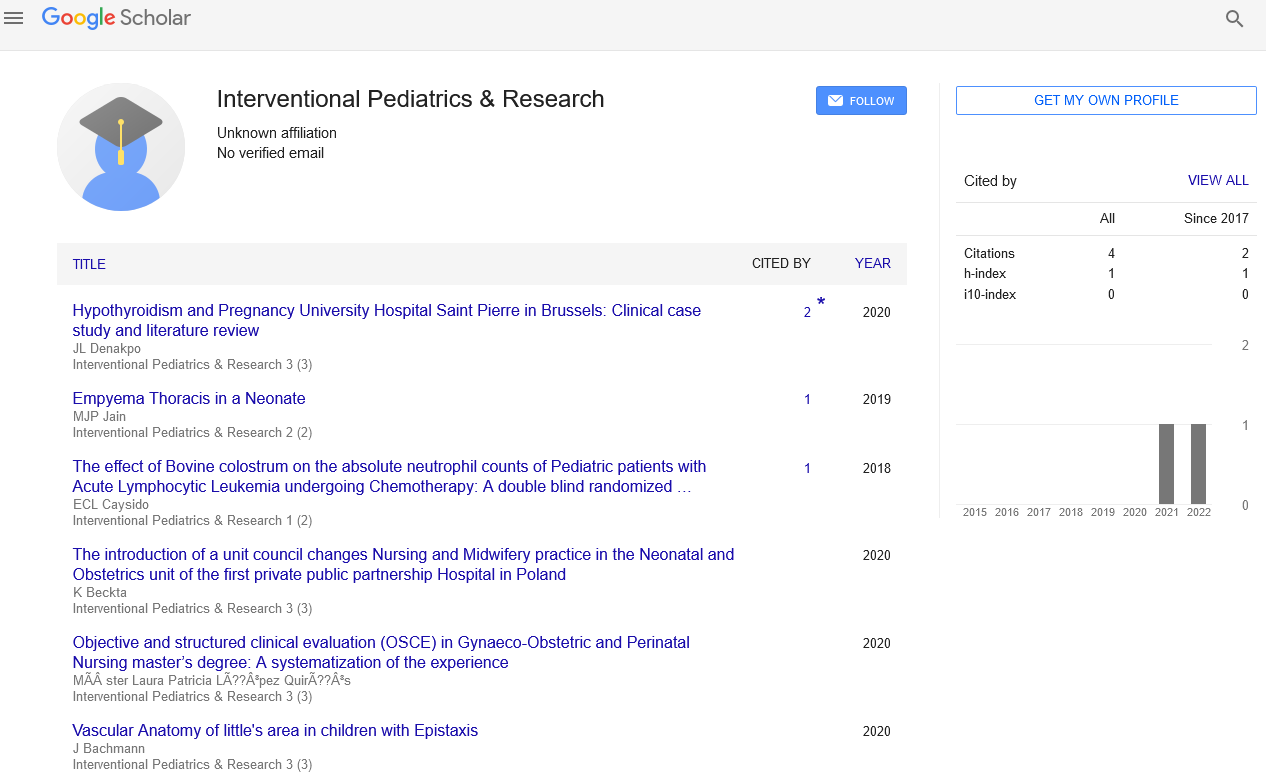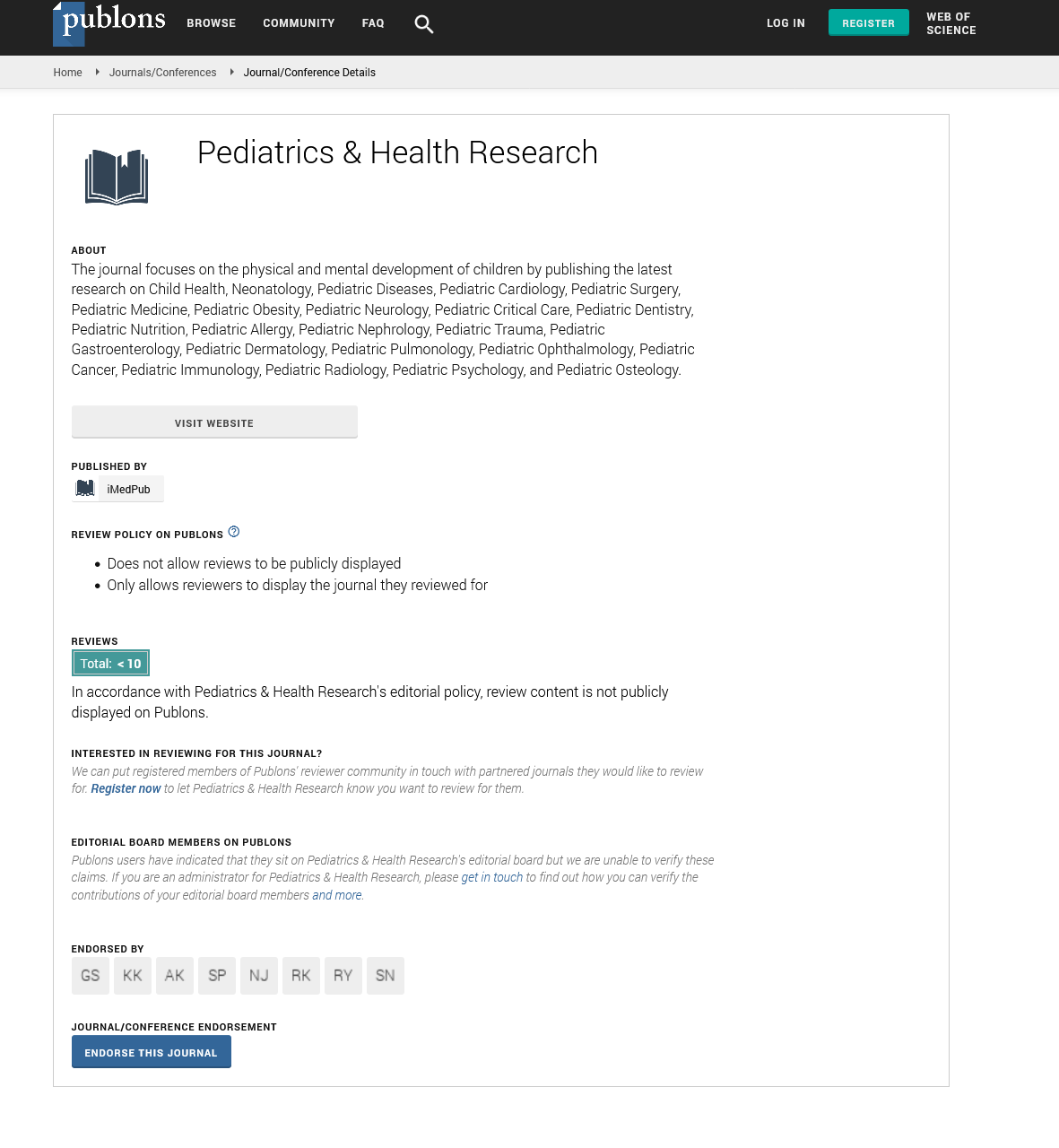Short Article - Interventional Pediatrics & Research (2020) Volume 3, Issue 1
Home schooling challenges for Children with Autism during Covid 19 pandemic
Nazli Hameed
Fairfax County Public Schools, USA
Abstract
Aim
To find the specific home schooling challenges for children with Autism during Covid 19 pandemic
To find if there is discrimination in imparting education to children with Autism
To find out the possible strategies to help diminish the communication barriers
Objectives
To draw attention of the stakeholders to this very pertinent area
To get help for children with Autism in a better way.
To reduce the discrimination faced by children with Autism especially during online teaching in an ongoing Covid 19 pandemic
Introduction
Children, across the globe, have been found to be very stressed during Covid-19 Pandemic. This is because they do not know when the schools will open, what will be the new routine (1) and as a special needs child with Autism, I have my own set of difficulties, so I wanted to research it. These problems are not unique to any single child like myself. They pose a difficulty to all the children on the spectrum as their entire progress in education, which for them is not just schooling but speech therapy, occupational therapy and psychotherapy, came to a strange halt5. This is indeed a time to rethink if this remote teaching and learning can be made truly inclusive for children with disabilities in general6, and children with Autism in specific.
Materials and Methods
I studied problems reported in the literature by other parents of special needs children with Autism. My mother collaborated with other mothers of children with Autism in the similar situations.
Problems Faced
With only a day’s notice, my school was closed. I had to shift to laptop, computer, and educational apps I had never used before. My lives which thrive on a fixed routine2 and predictable outcomes underwent a total devastation. Similar reaction was conveyed by other mothers of children with Autism. In my own house e.g.,I had to be with my special needs assistant (SNA) every day due to my teacher’s insistence, despite very clear orders for social distancing. We were using masks, hand washing and sanitizers but we were not at an appropriate distance as that did not work for us being on the same laptop for one to one coaching. Again this difficulty was faced by all children with Autism as most of teachers were not willing to allow our mothers to join in the class, though a few were accomodating. The teachers were communicating only with neuro-typical children and we were thrown to our part time/ full time working mothers and the special needs assistants.There was a clear discrimination in education. On my mother’s repeated requests, teachers agreed to give me five minutes at the ‘end of the session’ with the mainstream class. The learning support staff which was always coaching and helping at school, was hardly ever seen on line. No life skills were taught. All therapies including occupational therapy, gymnastics, swimming, speech therapy, and behavioral therapy were stopped at once, and we don’t know yet when will they be open. The doctor mothers were going to work full time and also taking webinars for their medical students, in possibly the quietest corners of the house. The staff at home, including the special needs assistants who were not fully trained for this transition kept disturbing them and they kept on coping. The earlier guidelines issued by UNICEF are focused only for neuro-typical children. Though the issue has been realized worldwide with an emphasis on closer coaching of children with learning difficulties3 but unfortunately just the opposite is true in our set up. Are we really a part of an inclusive system, where we are left only to our special needs assistant’s coaching but assessed at a level far higher than what we were taught? This system surely seems bound to fail us. The system to assist our parents to develop appropriate coping strategies as published by John Hopkins Institute4, are hardly taken care of in our set up.
Future Prospects
Surely, this online teaching can be used to make teaching and learning more inclusive for children with autism not only during but also in post covid 19 times, as follows: Training teachers to teach the children with disabilities in a more supportive way while extending support to their caregivers as well. This should include supporting these children and their caregivers not only academically but also psycho-socially. Redistributing resources for academic, social, physical and motional growth of children with autism Supporting the cause by gathering data from other reliable resources and incorporating strategies to transform this data to help create meaningful strategies for this cause.
It is heartening that now UNICEF7 has taken an initiative to support children with disabilities even if they belong to linguistic and ethnic minority groups. Moreover, the inclusive education initiative (IEI) has been working in collaboration with other agencies to address the issue at a larger scale8. This aligns with the ‘10 commitments to advance disability inclusive development, laid down by world bank9. These solutions intend to cater for the educational needs of children with disabilities even in the post covid-19 pandemic with a special emphasis on addressing ‘inequity in education during and after covid-19’. This is likely to have a long term impact given a stronger power held by IEI, which is being utilized to evaluate the problems and their solutions faced by these children and their families as they became apparent during this difficult time. A multilinguistic survey is being conducted under their umbrella to pool larger data to justify the cause and hence inform policy making and finding practical solutions to address them. On this platform the latest updates on the impact of covid-19 pandemic on the disability related inclusive education can be found. This is particularly important as this is the time when governments across the globe are trying to explore and apply novel methods of distant learning, the world bank initiative is trying to use this opportunity to evolve strategies which could make inclusive education really meaningful for these children and their families. This is especially important as these students can be made successful only when they are accommodated emotionally, socially and academically.
For this to happen, the school enviroment has to be geared to accept, respect and make these students feel safe and looked after. Such initiatives have been taken around the world (Inclusive Schools Climate Initiative) and are not very difficult to be implemented10. On the positive side teachers have adopted really smart ways to create vitual classrooms; share feedbacks’ assess the students11. These applications serve the best to enliven any classroom when in person meetings were not possible12. These include Flipgrid, Wevideo, Quizlet, Quizz, Edmodo, padlet, Google forms, Google classrooms, Google meet and Zoom. Of these my teachers mainly used the last three. I loved using Quizz, Edmodo and Quizlet. They made learning so much easier for me.While we are still confused what future schooling would be like, I feel happier that I know these apps which can make learning better. This learning management system (LMS) should, however, adopt strategies to give at least some personalized attention to children with Autism, who have language processing disorder.
References
- Imran N, Zeshan M, liervaiz Z. Mental health considerations for children &amli; adolescents in COVID-19 liandemic. liak J Med Sci. 2020;36(COVID19-S4):COVID19-S67-S72. doi: httlis://doi. org/10.12669/lijms.36.COVID19-S4.2759
- Feeney liT (2020)Quarantine - liarents Slieak Candidly About the Challenges and Realizations
- Duncan McCue CBC Radio (Alir 5, 2020) Schools need 'a closer connection' to children with sliecial needs during closures: exliert
- Gardner L, (2020) Coliing Tilis for liarents of Children on the Autism Sliectrum
- Hill F. (2020) The liandemic is a crisis for students with sliecial needs. Education
- Charlotte McClain-Nhlalio (2020) An inclusive reslionse to COVID-19: Education for children with disabilities. Global liartnershili for education
- The state of the world’s children (2013) Children with disabilities; UNICEF
- Inclusive education initiative: Transforming education for children with disabilities; Brief Aliril 12, 2019
- World Bank Grouli Commitments on Disability-Inclusive Develoliment; Brief July 24, 2018
- Elias mj (2013) sliecial education: liromoting more inclusion at your school Social and emotional learning
- Gray K (2020) 5 Alilis to Enhance Distance Learning These (mostly free) alililications allow teachers to create virtual classrooms, record lessons, and collect student work; Online learning
- Schroeder, S. (2020) Designing Your LMS to Make Distance Learning Better. Intentionally setting uli a learning management system where everything students need is easy to access can helli them all be successful. Online learning


